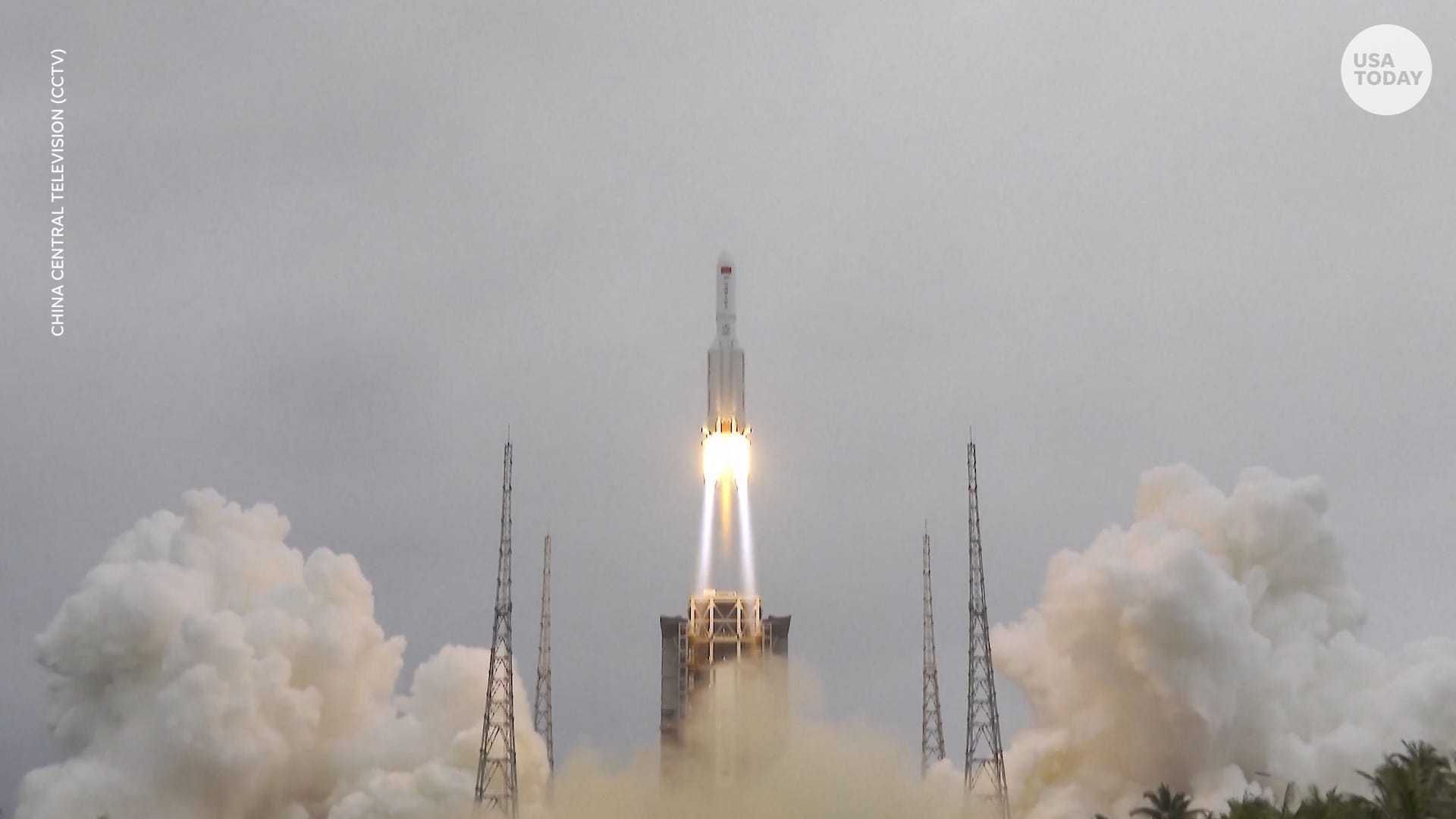After days of uncertainty, Chinese rocket reenters atmosphere over Indian Ocean
Doyle Rice , Rick Jervis , Joel Shannon | USA TODAY

Debris from a huge section of a Chinese Long March 5B rocket reentered the Earth's atmosphere over the Indian Ocean near the Maldives, China's space agency said, The New York Times and The Washington Post reported late Saturday.
The U.S. Space Command said it could confirm that the rocket reentered over the Arabian Peninsula at about 10:15 p.m. EDT, but that "it is unknown if the debris impacted land or water."
The news comes after days of uncertainty, with experts saying the rocket's size and speed made it nearly impossible to pinpoint what might happen as it fell to earth. The section was roughly 100 feet long and and is among the biggest pieces of space debris to fall to Earth.
The debris came from the largest section of the rocket, which launched the main module of China’s first permanent space station into orbit. Usually, discarded rocket stages reenter the atmosphere soon after liftoff, normally over water, and don’t go into orbit.
On Saturday, models and visualizations from various space research organizations showed the debris could land along numerous flight paths crossing the globe.
Australia, Africa, parts of Europe, South America, Central America and the U.S. were all under possible reentry zones, according to Aerospace Corporation, a California-based non-profit group that operates a space research and development center.
Friday, China tried to ease global fears by saying the rocket was expected to mostly burn up on reentry and posed little threat to people and property on the ground.
Previously: Chinese rocket hurtling back to Earth
The Long March 5B rocket carrying China's Tianhe space station core module lifted off from the Wenchang Space Launch Center in southern China's Hainan province April 29, 2021. Known as the Heavenly Harmony, the space station will be China's first to host astronauts long-term.
China plans 10 more launches to carry additional parts of the space station into orbit.
Unlike other space vessels that have fallen to earth, such as debris from the NASA Skylab Space Station, which crashed into the unpopulated Australian desert in 1979, the Chinese rocket wasn't designed to determine it's reentry point, said Leroy Chiao, a former NASA astronaut and commander of the International Space Station in 2004-2005.
It's not the first rocket to fall to the earth in recent memory. Last year, part of a Chinese rocket, one of the largest pieces of uncontrolled space debris ever, passed directly over Los Angeles and Central Park in New York City before landing in the Atlantic Ocean, CNN reported.
The 18-ton rocket that fell last May was the heaviest debris to fall uncontrolled since the Soviet space station Salyut 7 in 1991.
China’s first space station, Tiangong-1, crashed into the Pacific Ocean in 2016 after Beijing confirmed it had lost control. In 2019, the space agency controlled the demolition of its second station, Tiangong-2, in the atmosphere.
Contributing: The Associated Press
Via PakapNews